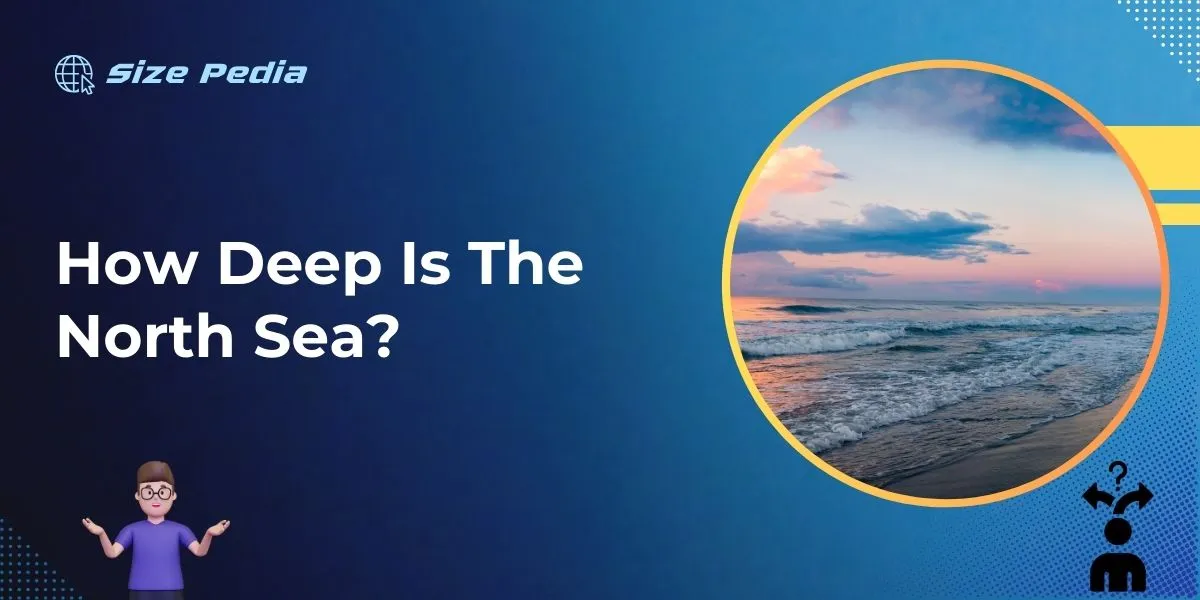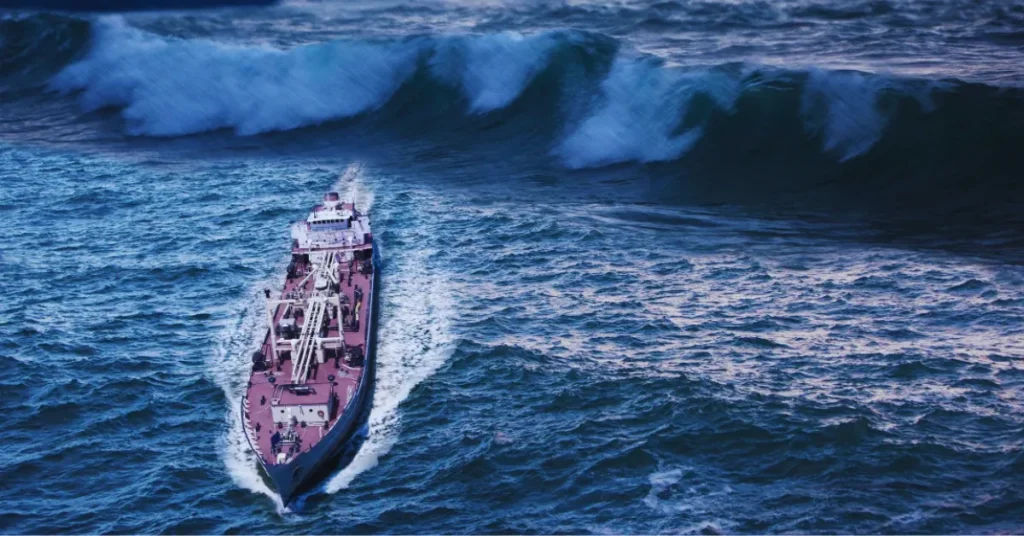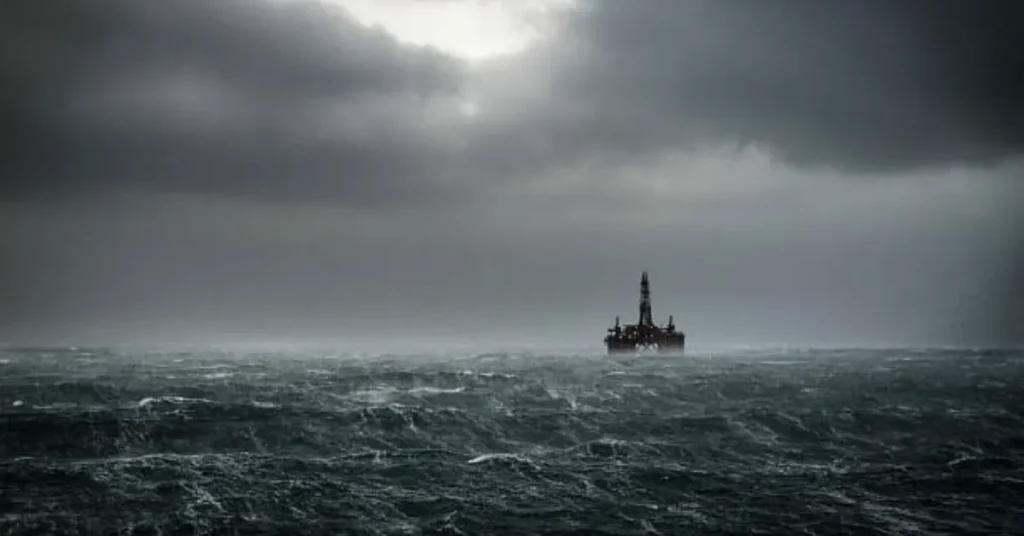The North Sea reaches a maximum depth of approximately 700 meters (2,300 feet). It averages about 95 meters (312 feet) in depth.
Exploring the North Sea, an expansive body of water bordered by Great Britain, Scandinavia, Germany, the Netherlands, Belgium, and France, reveals a hub of marine activity and a rich history.
Its relatively shallow average depth makes it a vital region for maritime navigation, fishing, and energy exploitation, particularly for oil and natural gas extraction.
The sea’s varying depths play a crucial role in these activities, influencing not only ecological habitats but also the feasibility of different types of sea-based operations.
Understanding the North Sea’s depth is essential for safe navigation, the construction of maritime structures, and the strategic planning of resource extraction, which underscores its importance in Europe’s economy and environment.

Plunging Into The Depths
The North Sea, a vast expanse of water nestled between Great Britain and continental Europe, plays a crucial role in marine navigation, commerce, and ecosystems.
Below the waves, its depths tell a story of geological history and present-day environmental conditions. Let’s dive into understanding the vastness of this marine treasure.
Basic Geographic Location
The North Sea blankets an area northeast of the British Isles, bordering countries like Norway, Denmark, Germany, the Netherlands, Belgium, and France. Much of Europe’s marine traffic sails over these waters.
General Depth Range
The North Sea’s character shines through its varying depth. On average, the sea floor lies between 94 to 95 meters deep, but this is not uniform across the entire body of water. The southern end, particularly shallow, provides rich fishing grounds and supports a diverse marine life.
Maximal Depths Encountered
Amid this broad and shallow shelf, certain points plunge deeper. The deepest point, known as the Norwegian Trench, reaches around 700 meters.
This trench, running parallel to the coast of Norway, is a spectacular underwater canyon teeming with unique marine species.
| Area | Average Depth (m) | Maximum Depth (m) |
| Southern North Sea | 40 | 100 |
| Central North Sea | 80 | 200 |
| Norwegian Trench | Various | ~700 |
Historical Exploration Of The North Sea
The North Sea’s depths have beckoned explorers throughout history. A place of mystery beneath the waves, it served as a canvas for humanity’s quest to chart the unknown.
The exploration of the North Sea has a rich heritage, from rudimentary attempts to modern technological advancements.
Early Nautical Maps And Depths
Navigation across the North Sea once depended on primitive charts. The earliest known maps were simplistic, missing crucial details like accurate depths.
Mariners used lead lines to gauge the ocean’s bottom, lobbing weighted ropes overboard and measuring how far they sank.
- 14th Century: First rudimentary depth recordings
- 16th Century: More detailed charts emerge
- 17th Century: Depth measurements become standard
Significant Expeditions
Curiosity fueled significant expeditions across the North Sea. Notable voyages mapped coastal lines and deep water pockets. Early explorers faced the perilous task of mapping unknown waters, forever shaping our understanding of this body of water.
| Year | Expedition | Contribution |
| 1872-1876 | Challenger Expedition | First systematic study of oceanic depths |
| 1902 | Svalbard Expedition | Detailed mapping of northern areas |
| 1931 | Snellius Expedition | Advanced understanding of sea floor structure |
Modern Surveys And Technologies
The last few decades have seen a technological revolution in how we understand the North Sea’s depths. Today’s efforts combine satellite imagery with sonar technology to create high-resolution 3D maps.
- Satellite altimetry measures sea surface height
- Multi-beam sonar systems map the sea floor in detail
- Autonomous underwater vehicles collect data in difficult areas
Each survey offers insights into the North Sea’s enigmatic depths. With innovation, our grasp on this historic and vital sea continues to deepen.
Variations In The North Sea Floor

The North Sea’s depth is far from uniform. Its fascinating sea floor landscape changes dramatically from one area to another. There are shallow shelves, deep trenches, and a variety of geological features.
Each part tells a different story about the sea’s history and formation. Let’s dive into the details to understand each segment.
Shallow Continental Shelves
Close to land, the North Sea rests on continental shelves. These areas are not very deep. They make the sea accessible for various activities like fishing and energy generation.
The shelves form a bridge between Europe’s coastline and the ocean’s deeper parts. Key details about these shelves include:
- Wide expanses of relatively shallow water
- Average depths of 40 to 50 meters
- Rich in marine life due to sunlight reaching the seabed
Deep Ocean Trenches And Troughs
Away from the shelves, the sea floor plunges into darkness. Here lie the North Sea’s trenches and troughs. Their depths challenge the limits of human exploration. These deep sections are important for understanding the ocean’s health. Characteristics include:
- Dark and cold environment
- Depths can reach over 700 meters
- Habitat for unique sea creatures
Geological Features Influencing Depth
Geology shapes the North Sea floor. Various features influence its depth. Some parts are uplifted by tectonic movements, while others are sculpted by glacial actions. Each has its unique impact. Among these features, we find:
- Underwater ridges creating elevated areas
- Sunken valleys known as submarine canyons
- Effects of ice ages seen in the sea bed’s contours
The North Sea’s Ecology At Different Depths
The North Sea, a rich and varied marine habitat, undergoes a remarkable transformation as one descends from sunlit shallows to shadowy depths.
Different species adapt to these contrasting environments, creating layered ecosystems unique to each level of depth. Let’s explore the bustling life at varying levels beneath the North Sea waves.
Life In Shallow Waters
In the sun-drenched shallows of the North Sea, marine life thrives. Here’s a glimpse of what you might find:
- Seagrass meadows: Home to juvenile fish and crustaceans.
- Colorful anemones and barnacles: Clinging to rocks and reefs.
- Shoals of herring: Darting among the shallow waves.
Shallow regions provide critical habitats for breeding and feeding, supporting a diverse ecosystem.
Adapting To The Abyss
As depths increase, sunlight fades, and creatures must adapt. Characteristics of deep-sea dwellers:
| Depth (meters) | Adaptations |
| 200 – 500 | Bioluminescence for communication and hunting |
| 500+ | Slowed metabolism to conserve energy |
Deep-sea species exhibit remarkable adaptations to survive in this alien world.
Depth-related Challenges For Marine Life
The North Sea’s depths impose unique challenges on its inhabitants:
- Dramatic pressure changes with increasing depth.
- Lack of light affects photosynthesis and vision.
- Varying temperature gradients influence life forms.
These hurdles shape a robust community of marine life, resilient and ever-evolving.
Human Endeavors In Deep Waters
The North Sea, a bustling hive of human activity, reveals its depth in various ways. Not just a body of water, the North Sea serves as a crucible for commerce, energy, and science.
Delve into stories hidden beneath its waves and discover the essence of human determination and ingenuity in its depths.
Navigating Shipping Routes
Boats and ships cross the North Sea daily. They carry goods, people, and hope from one shore to another. These vessels depend on deep waters to navigate safely.
As they travel, they follow paths laid out by experts. Those paths keep them away from danger. They also ensure timely arrivals at ports.
Exploiting Offshore Resources
- Oil and gas lie beneath the sea.
- Companies build platforms to reach these resources.
- They use drills and machinery designed for the sea’s depth.
- Workers live on the sea, pulling energy from far below.
Deep-sea Research And Conservation Efforts
Scientists dive deep to study the North Sea. They want to understand the creatures that live there. Their research helps protect the sea’s health.
Conservationists work to save endangered species. They also fight pollution. Their goal? A North Sea that will thrive for all time.
The Future Of Depth Measurement

An understanding of the North Sea’s depth is crucial for various fields, ranging from marine biology to oil exploration. With the dawn of advanced technology, measuring these depths with precision is more achievable than ever before.
This enables experts to better predict and adapt to earth’s underwater changes. The future of depth measurement looks promising, with innovations rolling in from multiple fronts.
Advancements In Underwater Technology
The journey into the deep is empowered by significant technological strides. These tools provide precise depth data, vital for coastal management and scientific research.
- Autonomous Underwater Vehicles (AUVs) with high-resolution sonar systems;
- Improved Remote Operated Vehicles (ROVs) offering greater control and accuracy;
- Advanced satellite systems, pairing with in-situ sensors for depth analysis;
- Enhanced data processing algorithms for accurate depth maps.
Impact Of Climate Change On Sea Levels
Climate change is altering sea levels at a notable pace. This directly affects depth measurements. With melting ice caps and thermal expansion of water, the future of the North Sea’s depth is in flux.
| Variable | Impact |
| Melting Glaciers | Rising sea levels |
| Warmer Temperatures | Expanded water volume |
Depth measurements must adapt to reflect changing baselines. This is critical for navigation, construction, and understanding environmental shifts.
Predicting Future Landscape Changes
Predicting changes in underwater landscapes shaped by erosion and sediment deposition is vital. Modern depth measurement techniques allow for precise mapping, offering insights into future topographical shifts.
- Evaluate the impact of currents on the seabed;
- Assess sediment transport patterns;
- Project possible navigation hazards;
- Advise on suitable locations for marine infrastructure.
Utilizing predictive models, scientists can better anticipate the shifting face of the sea floor. This informs preparedness and policy decisions, safeguarding the future of maritime operations.
FAQs About How Deep Is The North Sea
What Is The Maximum Depth Of The North Sea?
The North Sea’s maximum depth is approximately 700 meters (2,297 feet). This point is located in the Skagerrak strait, where the North Sea meets the Baltic Sea.
How Vast Is The North Sea Area?
Covering an area of around 750,000 square kilometers (290,000 square miles), the North Sea is a sizeable body of water located between Great Britain, Scandinavia, Germany, the Netherlands, Belgium, and France.
What’s The Average Depth Of The North Sea?
Averaging about 95 meters (312 feet), the North Sea is relatively shallow compared to other bodies of water. Its depth is influenced by underwater ridges and troughs.
Are There Oil Reserves In The North Sea?
Yes, the North Sea is rich in oil and natural gas reserves. It has been a significant source of these resources since the discovery of oil in the 1960s.
Conclusion
Exploring the depths of the North Sea has revealed a fascinating underwater landscape. Its depth varies significantly, peaking at about 700 meters. This knowledge enhances our understanding of the marine ecosystem.
Dive into its history, and the North Sea’s mysteries unfold, reflecting the dynamic forces shaping our planet.
Resources:
1. https://www.nasa.gov/image-article/the-glowing-north-sea/
